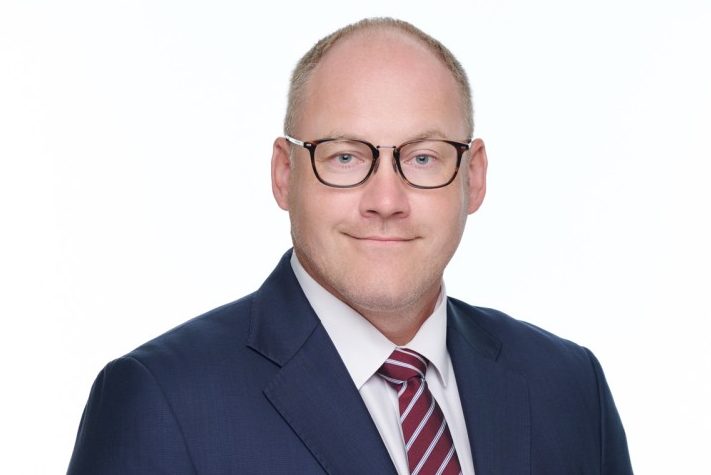At GITEX 2025, ESG Mena spoke with Rasso Bartenschlager, General Manager of Al Masaood Power, about the company’s latest innovation — a professional-grade, emission-free, portable battery system developed in partnership with Instagrid. In this interview, Bartenschlager explains how the technology enhances sustainability, safety, and efficiency across industries such as construction, emergency services, and media production.
What are you introducing at GITEX 2025?
We are introducing a new product, which is basically the world’s most advanced portable power system. It weighs around 20 kilograms and can easily be carried by hand. Together with Instagrid, we are bringing this innovation to the UAE. It addresses many issues we see in traditional power generation — especially sustainability and safety. For instance, in construction, one of the biggest hazards is tripping over cables or dealing with obstacles. With traditional generators, you also have to handle fuel on-site, which adds fire risks, fumes, and emissions. Our new system eliminates all of that.
How exactly does this system work?
It’s essentially an advanced battery system that acts like a compact power hub designed for professionals. It’s not meant for consumer use like mobile charging. The product was engineered based on feedback from construction companies and heavy users such as civil defense teams. They wanted something compact, powerful, and easy to carry — and that’s exactly what this device delivers.
Can you elaborate on its power capacity and performance?
The capacity is 2.1 kilowatt-hours, with a peak load of 18,000 watts. That means it can handle equipment that requires a high starting current, which normally forces users to oversize traditional generators. So instead of using a 100-kilogram generator, you can simply use this 20-kilogram unit.
Is it rechargeable? How long does it take to charge fully?
Yes, it’s rechargeable and can also be powered by solar energy. From empty to full, it takes around three hours to charge completely.
How do you see your product positioned in terms of pricing?
Pricing isn’t an issue. Currently, there’s no direct competition for this level of technology in the market, and considering the long-term savings on fuel and maintenance, it’s much more cost-effective than conventional generators.
Where will you launch it first?
We signed an MoU today for the UAE market to start with. The product is engineered and patented in Germany, where it’s already in use by professionals with over 100,000 successful deployments. The UAE market shows strong demand for such a solution, and now the product is ready to be introduced here.
Who are your main target users?
Our main target sectors include construction, utilities, and facility maintenance. Beyond that, we’re also focusing on civil defense, including ambulance, firefighting, police, and national security units. Additionally, we see great potential in the events and media industries — for example, in Saudi Arabia, the units have already been used by camera teams. They used to rely on noisy, fuel-powered generators with long cables. Now, they can work emission-free, cable-free, and completely silent.
What about product durability and certification?
It comes with a four-year warranty, which is quite long for this type of product. It’s CE certified for Europe and complies with all local UAE regulations, ensuring top safety and quality standards.
What’s next after signing the MoU?
The next step is to finalize the partnership agreement and begin building our distribution network across the UAE — and potentially expand to other parts of the region afterward.
You also mentioned plans related to the Dubai Airshow. Can you tell us more?
Yes, we’ve reserved a spot at the upcoming Dubai Airshow. As you know, Dubai Airport is among the top three in the world, alongside Paris and London, and it continues to grow. With our product range, we aim to support the development of the new airport by offering solutions that enhance sustainability and power security. The UAE has one of the most stable electrical grids globally, but as more renewable energy, EV charging, and data centers come online, reliable backup power becomes increasingly essential. Airports are mission-critical sites, and we have the right products to ensure their operations remain uninterrupted.
Will you be announcing anything new at the Dubai Airshow?
Not yet, but we will definitely present something there.
How do you view the current state of sustainability and the challenges facing EV infrastructure development in the region?
Yes, sustainability has been a focus for us in recent years — not only through large-scale engagements but also through smaller initiatives that bring together experts from sectors like construction, EV, and water to understand on-the-ground challenges and co-develop solutions. Our new battery system addresses one of these challenges: EV charging in difficult conditions.
Can this system be used to charge electric vehicles?
That’s a question I’ve been asked several times here. Technically, you can’t directly charge a Tesla, for example, because Tesla’s socket design doesn’t support that connection. However, with certain combinations of three linked units and adapters, it’s possible to provide around 15 kilometers of emergency range — just enough to reach the next charging station or move a vehicle out of danger if it’s stranded on the highway.
There’s been discussion about slow charging times for electric fleets in the region. How does your technology help with that?
Indeed, many logistics and delivery companies, like DHL or RMX, have struggled with EV fleet charging times, sometimes taking up to three or four hours. But charging technology has evolved significantly — with new fast and super-fast charging options emerging. The real challenge now lies in infrastructure readiness and physical acceptance of these systems, not the technology itself.




